Weyerhaeuser announced in a press release dated July 18, 2017 that its TJI® Joists with Flak Jacket® Protection manufactured after Dec. 1, 2016 are releasing an odor “related to a recent formula change to the Flak Jacket coating that included formaldehyde-based resin.”
Flak Jacket Protection is a coating applied to I-joists to enhance fire resistance. According to the press release the joists in question are “present in the basements of approximately 2,200 houses in various stages of construction in limited markets.” The press release states that the issue does not affect any of Weyerhaeuser’s other products.
Weyerhaeuser has agreed to cover the cost to either remediate or replace affected joists. For information on the “top coat” solution being offered by Weyerhaeuser, click here. The company has halted all production, sales and shipments of the product, and is collecting unused product from customers.
To read the press release, click here.
Affected homes may be in New Jersey, Colorado, Delaware, Arkansas, Missouri and Ohio. Builders involved in constructing these homes include Toll Brothers, Richmond America Homes, CalAtlantic Homes, and K. Hovnanian Homes.
Formaldehyde is a colorless, flammable gas at room temperature and has a strong odor. Exposure to formaldehyde may cause adverse health effects including irritation of the skin, eyes, nose, and throat and can exacerbate existing respiratory illnesses. The Department of Health and Human Services (HHS) determined in 2011 that formaldehyde is a known human carcinogen and high exposures may cause cancer.
The EPA has set limits for formaldehyde in drinking water. However, there are no national limits for formaldehyde concentration in the air in our homes. The Occupational Health and Safety Administration (OSHA) has limited workers’ exposure to an average of 0.75 ppm for an 8-hour workday, 40-hour workweek. The U.S. Department of Housing and Urban Development (HUD) has set standards for formaldehyde emissions in manufactured housing of less than 0.2 ppm for plywood and 0.3 ppm for particle board. The HUD standards are designed to provide an ambient air level of 0.4 ppm or less in manufactured housing.
The National Institute of Occupational Safety and Health (NIOSH) recommended limit for occupational exposure to formaldehyde is 20 ng/L (.016 ppm). The World Health Organization (WHO) has recommended that short-term formaldehyde exposures not exceed 100 ng/L (0.08 ppm).
For more information on formaldehyde, click here.
According to a recent release from Prism Analytical Technologies, it has analyzed a few indoor air quality samples from homes that have the Weyerhaeuser joists at issue. The “results have indicated formaldehyde levels in the range of 300-900 ng/L. Most homes measured by Prism’s air test have concentrations in the range of 30-70 ng/L.” Prism’s 20-minute formaldehyde test is accredited by the American Industrial Hygiene Association (AIHA). For more information on The Prism Analytical test for formaldehyde, click here.
I have not located any information indicating the Weyerhaeuser joists in question were sold or used in Maine. However, formaldehyde is produced naturally by humans, plants (especially woods), and animals. Formaldehyde is also found in many man made products, including engineered wood products (e.g., particle board, plywood, OSB, MDF, flooring, etc.), some preservatives, personal care and cleaning products, cosmetics, permanent press fabrics, glues, air fresheners, paints and coatings.
Formaldehyde is also a byproduct of combustion, which includes some vehicle exhaust, fuel-burning appliances (gas stoves, kerosene space heaters, etc.), fireplaces, wildfires, structural fires, tobacco smoke, and trash fires.
Formaldehyde levels in laminate flooring made in China and sold by Lumber Liquidators became an issue in after a 60 Minutes report aired in March of 2015. This story resulted in my testing many homes for formaldehyde. Click here for a blog I published regarding formaldehyde in laminate flooring.
If you have any questions concerning testing for formaldehyde, or indoor air quality issues, please call 944-7425.
I will update this blog as more information becomes available.
